 |
 |
 |
 |
 |
 |
| |
 |
|
 |
 |
 |
  |
  |
 |
 |
 |
 |
|
|
 |
|
 |
 |
 |
BUILDING |
 |
|
 |
|
 |
 |
 |
| |
 |
| 
 |
Bauhaus-Museum Weimar
|
|
 |
 |
 |
 |
DESIGNER |
 |
|
|
 |
|
 |
 |
 |
| |
 |
|
 |
 |
 |
 |
DESCRIPTION |
 |
|
|
 |
|
 |
 |
 |
| . |
 |
|
 |
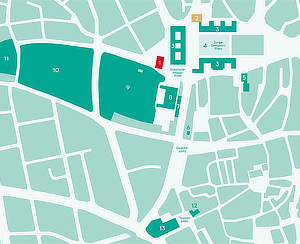 In 1995 the Bauhaus finally received a permanent place in Weimar’s rich commemorative landscape. Installed in the former Kunsthalle on Theaterplatz, the provisional Bauhaus museum presented visitors with only a small fraction of the extensive Weimar Bauhaus collection. Unfortunately, the museum neither provided sufficient space to display the numerous Bauhaus pieces nor did it meet the museological and conservatorial requirements of today.
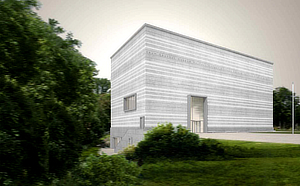 In 2008 the German federal government and the state of Thuringia commissioned the Klassik Stiftung Weimar to build a new Bauhaus museum. In 2012 the Klassik Stiftung hosted an international architectural design competition for the museum. Out of more than 500 submissions, four were invited to revise and further develop their designs. In this bidding procedure, the jury selected the winning proposal by Prof. Heike Hanada, Berlin, in cooperation with Prof. Benedict Tonon, Berlin.
The geometric clarity of its architecture - a minimalistic cube atop a concrete base, illuminated by LED strips at night - features five levels which merge into open, two-story rooms. Construction of the museum began in November 2015, the realisation of which was supervised by Heike Hanada on behalf of the Klassik Stiftung Weimar since 2013. |
|
 |
 |
 |
|
 |
|
| Prof. Heike Hanada, Architect of the Bauhaus Museums Weimar |
 |
|
 |
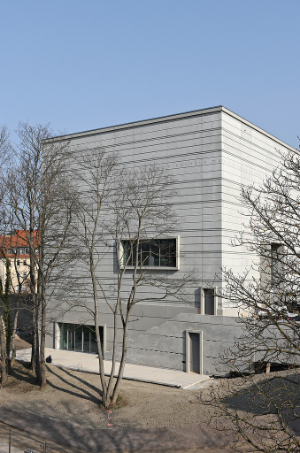 The new Bauhaus Museum in Weimar is reduced to a clearly defined, geometric form. The enclosing shell of light-grey concrete lends the cube stability and dynamic solidity. The monolith stands firmly planted between downtown and the Schwansee Park, and its body of poured concrete creates structure and space within and without. The new Bauhaus Museum in Weimar is reduced to a clearly defined, geometric form. The enclosing shell of light-grey concrete lends the cube stability and dynamic solidity. The monolith stands firmly planted between downtown and the Schwansee Park, and its body of poured concrete creates structure and space within and without.
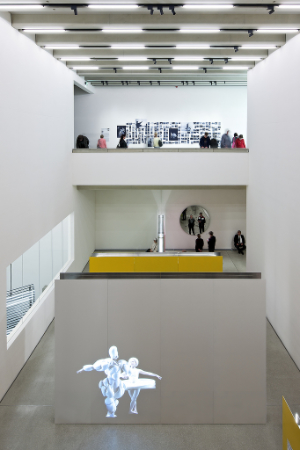 Despite its distance from Karl-Liebknecht-Strai3e, the size, height and position of the museum convey a self-confident attitude and create a striking impression in Weimar’s urban infrastructure. At the same time, the structure serves as a hinge on a fault line in German history - on one side, the spacious Volkspark created during the 1920s, and on the other, the so-called “Gauforum” built by the National Socialists. The colonnades, which were intended to line the street and plaza, are now confronted with the open, flowing space of the original Asbach valley. The rupture is underscored in two ways: the emphasis on the difference in elevation of the slope and the annexation of the terrain by the Gauforum using free forms of “nature”. The result is a space that interconnects different places; it recognises the foreignness of the Gauforum yet integrates its traverses and colonnades without falling victim to its fascist spatial principles. Weimar’s eventful history - the emergence of modernism and its eventual expulsion - is clearly and consciously emphasised by the museum’s location. Together with the Neues Museum, the Stadtmuseum and the exhibition at the Gauforum, the Bauhaus Museum forms a new cultural centre in Weimar. The role of the museum is defined by its responsibility as a public space in the city. With elements such as plinths, fasciae, portals, stairways and a terrace to the park, the architecture incorporates classical themes that underscore its public character. However, these same elements stand in stark contrast, at least historically speaking, to the over-dimensional horizontal and vertical window apertures which allow for surprising transparency between the interior and exterior. The seemingly endless debate for and against horizontal windows (see “For and Against the Horizontal Window. The Perret - Le Corbusier Controversy”, Bruno Reichlin, Daidalos No. 13, Berlin 1984), resolves itself here in coherence and echoes the design concept inside the museum with its expansive windows in the two-story interior space and the cascading stairs which invite visitors to stroll and linger. Despite its distance from Karl-Liebknecht-Strai3e, the size, height and position of the museum convey a self-confident attitude and create a striking impression in Weimar’s urban infrastructure. At the same time, the structure serves as a hinge on a fault line in German history - on one side, the spacious Volkspark created during the 1920s, and on the other, the so-called “Gauforum” built by the National Socialists. The colonnades, which were intended to line the street and plaza, are now confronted with the open, flowing space of the original Asbach valley. The rupture is underscored in two ways: the emphasis on the difference in elevation of the slope and the annexation of the terrain by the Gauforum using free forms of “nature”. The result is a space that interconnects different places; it recognises the foreignness of the Gauforum yet integrates its traverses and colonnades without falling victim to its fascist spatial principles. Weimar’s eventful history - the emergence of modernism and its eventual expulsion - is clearly and consciously emphasised by the museum’s location. Together with the Neues Museum, the Stadtmuseum and the exhibition at the Gauforum, the Bauhaus Museum forms a new cultural centre in Weimar. The role of the museum is defined by its responsibility as a public space in the city. With elements such as plinths, fasciae, portals, stairways and a terrace to the park, the architecture incorporates classical themes that underscore its public character. However, these same elements stand in stark contrast, at least historically speaking, to the over-dimensional horizontal and vertical window apertures which allow for surprising transparency between the interior and exterior. The seemingly endless debate for and against horizontal windows (see “For and Against the Horizontal Window. The Perret - Le Corbusier Controversy”, Bruno Reichlin, Daidalos No. 13, Berlin 1984), resolves itself here in coherence and echoes the design concept inside the museum with its expansive windows in the two-story interior space and the cascading stairs which invite visitors to stroll and linger.
In line with the urban planning concept, the interior construction of the museum is orthogonally positioned in relation to the park. The arrangement of the main stairs corresponds to the topographical slope of the outside terrain. The visitors ascend a succession of interchanging open spaces and staircases until they finally arrive at the top floor where they are presented with an unobstructed view of the park. The cascading staircases is encased by ceiling-high walls and function as free-standing, enclosed bodies in the interior space. For a brief moment, they draw the viewers’ attention inward, before releasing it again as they enter the open exhibition levels. This interplay of flowing and framed room sequences serves to highlight the exhibition’s thematic division and thereby enhances its organic structure. Furthermore, several open spaces are diagonally arranged to provide alternative lines of sights and enable visitors to more easily orient themselves in the building.
The entrance hall with its impressive portal transforms the passer-by into a museum visitor. The floor and walls of the hall correspond to the materiality and haptic quality of the exterior concrete base of the museum. The interior and exterior converge within the hall. It is the starting point for all the main paths into and through the museum, connecting the public areas and the exhibition space. From here visitors can reach the information desk on the ground floor and the freely accessibly exhibition on the “Topography of Modernism”, as well as the museum shop located directly behind. Across from the main portal, a window to the park establishes a reference to the outdoors as soon as the visitor enters the museum. A large bench invites one to relax for a while. The south staircase leads to a spacious park-level terrace on the lower ground floor where a cafe and lounge await. The lounge and foyer are visually connected via a large interior window. The cafe on the park level extends outward to the terrace, inviting park visitors into the lounge area. From there, they can make use of the public areas and services of the museum which extend all the way to the first floor. This is where a small presentation room and the workshop room for museum educational programmes are located. The workshop is furnished with fitted wooden cabinets in birch veneer and a horizontal window spanning the length of the room with a view to the park. From the interior balcony on the first floor, visitors can gain entrance to the actual exhibition area.
A distinctive feature of the museum’s design is its sophisticated energy concept. The thermal activation of the ribbed slab construction guarantees compliance with the prescribed air- conditioning requirements, while consistently reducing the energy needs of the museum. Being so compact, the construction of the building requires a relatively limited amount of resources. The concept includes numerous measures which ensure the sustainability of the building, e.g. the use of highly durable building materials like steel, glass, concrete, stone floors and loam rendering. The exposed concrete ribbed-slab ceilings using T-beam elements accommodate the entire ventilation system, as well as cabling for the lighting and sound systems.
When night falls, the monolithic structure rises from its stone pedestal in the glittering glow of horizontal light strips. The museum’s interior offers space and structure while its exterior gently radiates. In contrast to its precision and clarity within this urban setting, when dusk arrives the outermost layer of the structure transforms into something intangible and ethereal. |
|
 |
 |
 |
|
 |
|
| . |
 |
|
 |
|
 |
 |
 |
|
 |
|
| Construction progress |
 |
|
 |
- ground—breaking: 10 November 2015
- cornerstone ceremony: 28 October 2016
- start of shell construction: 9 January 2017
- completion of the base slab: 16 March 2017
- topping out ceremony: 30 November 2017
- completion of facade: 13 December 2018
|
|
 |
 |
 |
 |
 |
 |
 |
POINTS OF VIEW |
 |
|
|
 |
|
 |
 |
 |
| |
 |
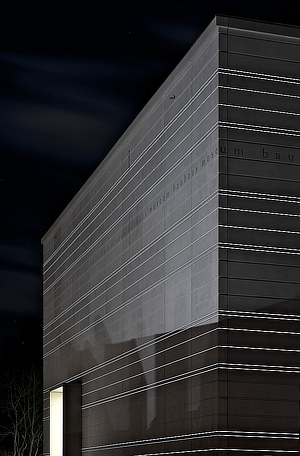
Heike Hanada, architect:
“After many years of planning and building, the moment has finally arrived: the completion of a building with a striking urbanistic presence. The museum is reduced to a clearly defined, geometric form. The enclosing shell of light-grey concrete lends the cube stability and dynamic solidity. The connection between the city and the park was very important to me, for the museum is defined by its function in the public sphere. This is mirrored by the design concept which features two-story open spaces and cascading stairs which invite one to stroll and linger.”
Hellmut Seemann, president of the Klassik Stiftung Weimar:
“When the Bauhaus Museum joins Weimar’s museum landscape this weekend, the world will be watching. We have opened a new window for the presentation of the Bauhaus, its prehistory in Weimar, and its enormous impact after it was expelled from Weimar. At the centre of our concept is the aim to present modernism as a battle of competing ideas, exemplified by the displayed objects. The emergence of the Bauhaus 100 years ago reminds us that we, too, are the designers of our world and must remain so.”
Benjamin-lmmanuel Hoff, Thuringian State Minister of Culture
“The new Bauhaus Museum is a highlight in what is already an attractive Thuringian cultural location with its outstanding museum landscape. I am delighted that we have succeeded in planning and building the museum on schedule and within the budget allocated through public funding. We are opening a new institution which not only allows us to discuss the ideas of this internationally influential school of art, architecture and design. Vis-a-vis des the former Gauforum, where the permanent exhibition ‘Forced Labour. The Germans, Forced Labourers and the War’ will open next year, the Bauhaus Museum will also serve as a forum for discussing the ruptures and ambivalences of modernism that converge in Weimar as in a crucible.”
Peter Kleine, Mayor of Weimar
“The Bauhaus Museum will be the centrepiece of the newly emerging quarter of modernism in Weimar. At this infrastructurally and historically prominent location, the museum will vitally connect the area between Theaterplatz, Goetheplatz, Nordvorstadt and the Bahnhofsviertel. Visitors will be able to experience the full breadth of cultural developments spanning the 19th century to the ambivalent events of modernism up to the present day. The quarter not only reveals a new dimension of Weimar’s cultural identity, but also promises to generate new economic perspectives. And that’s why we especially look forward to the many additional guests who will be visiting our city in the decades to come.” |
|
 |
 |
 |
 |
MATERIALS |
 |
|
|
 |
|
 |
 |
 |
 |
 |
|
 |
 |
 |
 |
ECO-SUSTAINABILITY |
 |
|
|
 |
|
 |
 |
 |
|
|
 |
| A distinctive feature of the museum’s design is its sophisticated energy concept. The thermal activation of the ribbed slab construction guarantees compliance with the prescribed air- conditioning requirements, while consistently reducing the energy needs of the museum. Being so compact, the construction of the building requires a relatively limited amount of resources. The concept includes numerous measures which ensure the sustainability of the building, e.g. the use of highly durable building materials like steel, glass, concrete, stone floors and loam rendering. The exposed concrete ribbed-slab ceilings using T-beam elements accommodate the entire ventilation system, as well as cabling for the lighting and sound systems. |
|
 |
 |
 |
 |
 |
 |
 |
LOCATION |
 |
|
|
 |
|
 |
 |
 |

|
 |

|
Continent |
|
 |
|
Nation |
|
 |
|
Land |
|
 |
|
Town |
|
 |
|
Address |
|
 |
|
|
|
 |
|
Website |
|
 |
|
 |
 |
 |
 |
MAP |
 |
|
|
 |
|
 |
 |
 |
| |
 |
|
 |
 |
 |
 |
|
TYPOLOGY |
 |
|
|
 |
|
 |
 |
 |
Main |
 |
|
 |
ARCHITECTURE | Museums and buildings for exhibitions
Architectural and design museums
| |
|
|
 |
|
Additional |
 |
|
 |
ARCHITECTURE | Commercial buildings
Bars, cafeterias
| |
 |
 |
 |
 |
CHRONOLOGY |
 |
|
|
 |
|
 |
 |
 |
Project |
 |
|
 |
| 
 |
2012 - 2015
project winner of competition
|
|
Realisation |
 |
|
 |
| 
 |
2015 - 2019 |
|
 |
 |
 |
 |
ADDITIONS AND DIGRESSIONS |
 |
|
|
 |
|
 |
 |
 |
| |
 |
| “The Bauhaus Comes from Weimar” |
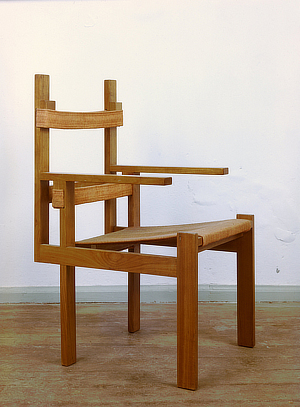 The Bauhaus Museum Weimar will present treasures from the world’s oldest Bauhaus collection for the first time featuring contemporary architecture and innovative exhibition design. The collection, established in 1925 by Walter Gropius with just 168 workshop pieces, has steadily grown over the years to 13,000 items. These include the famoustable lamp by Wilhelm Wagenfeld and Carl Jakob Jucker, the teapot by Marianne Brandt, the lattice chair by Marcel Breuer, ceramics by Theodor Bogler, carpets by GuntaStc'5|zl and Gertrud Arndt and works by Paul Klee, Peter Keler and Laszlo Moholy- Nagy. Impressive paintings, such as Lyonel Feininger’s “Church of Gelmeroda XI” and Paul Klee’s “Water park in autumn”, outstanding pieces of furniture by Mies van der Rohe and the Ludewig Design Collection portraythe remarkable development of the most influential school of art and design of the 20th century. The Bauhaus Museum Weimar will present treasures from the world’s oldest Bauhaus collection for the first time featuring contemporary architecture and innovative exhibition design. The collection, established in 1925 by Walter Gropius with just 168 workshop pieces, has steadily grown over the years to 13,000 items. These include the famoustable lamp by Wilhelm Wagenfeld and Carl Jakob Jucker, the teapot by Marianne Brandt, the lattice chair by Marcel Breuer, ceramics by Theodor Bogler, carpets by GuntaStc'5|zl and Gertrud Arndt and works by Paul Klee, Peter Keler and Laszlo Moholy- Nagy. Impressive paintings, such as Lyonel Feininger’s “Church of Gelmeroda XI” and Paul Klee’s “Water park in autumn”, outstanding pieces of furniture by Mies van der Rohe and the Ludewig Design Collection portraythe remarkable development of the most influential school of art and design of the 20th century.
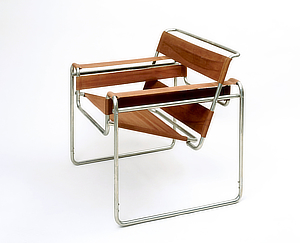 The exhibition “The Bauhaus Comes from Weimar” not only presents iconic designs and historical documents, some of which have never been shown before, but also highlightsthe lifestyle issues, utopias and experiments of the early Bauhaus and the 1920s. Based on the fundamental question “How do we want to live together?”, the exhibition addresses numerous Bauhaus ideas which remain relevant to this day. In this way, the new Bauhaus Museum will serve as avenue for encounter, openness and discussion. The exhibition “The Bauhaus Comes from Weimar” not only presents iconic designs and historical documents, some of which have never been shown before, but also highlightsthe lifestyle issues, utopias and experiments of the early Bauhaus and the 1920s. Based on the fundamental question “How do we want to live together?”, the exhibition addresses numerous Bauhaus ideas which remain relevant to this day. In this way, the new Bauhaus Museum will serve as avenue for encounter, openness and discussion.
The exhibition offers visitors diverse sensory experiences, for example, in the theatre room inspired by Lészlo Moholy-Nagy’s multimedia experiments. It also introduces them to practical workshop techniques from Bauhaus-era bookbinding to cutting-edge 3D printing.The museum has adopted various pedagogical approaches pioneered bythe Bauhaus in Weimar. It examinesthe standardisation and analysis of the “New Man” and explores how the Bauhaus aimed to improve modern living based on the example of the Haus Am Horn.
In addition to permanent displays spanning three floors, the new Bauhaus Museum features regular temporary exhibitions and an extensive accompanying programme. Not only do these highlight the Bauhaus avant-garde, but also contemporary designers, artists and architects.
The museum workshop offers a diverse programme to visitors of all ages. The exhibition itself provides numerous opportunities to learn about the Bauhaus interactively.
The museum is accessible to handicapped visitorsfrom all central access points. A tactile guidance system will be installed on the plaza leading to the front entrance. In the spirit of openness to all, the museum and its services have been specially designed for inclusivity and handicapped accessibility.
Thematic threads of the exhibition
1st floor
The exhibition begins on the first floor with an installation by the media artists of TheGreenEyl, Berlin/New York. The work presents text excerpts from the Bauhaus Manifesto of 1919, in which the social utopia of the early Bauhaus envisioned by Gropius lights up like a promise.
The New Man
The focus on the “New Man”, a topos of the 1920s, presents the widely diverse images of the human condition of that time - expressionistic, reform-oriented, constructivist and mechanical - and refers to similar debates in today’s society, e.g. regarding transhumanism.
School as Experiment
The next room entitled “School as Experiment” focuses on the early Bauhaus years in Weimar and the members of the teaching staff who strongly influenced its different forms of instruction. The famous Bauhaus pedagogical method, one of the great myths of the Bauhaus, was in fact several subjective, learning-based approaches to theory and praxis which coexisted in the early years.
2nd floor
Modern Life
The central theme on the second floor highlights the advances of “Modern Life” beginning with the Haus Am Horn. These demonstrate how new theories on rationality and functionality found their way into the private sphere. Topics include kitchens designed for better efficiency, the “construction kit” principle that not only applied to architecture, but also furniture production and standardised ceramics, and questions of hygiene and optimisation of living space. The Haus Am Horn, which the Klassik Stiftung Weimar will present starting in April 2019, shall serve as a venue 'itself for a corresponding exhibition where visitors will be able to tangibly experience the ideas of modern living in a walk-through architectural landmark.
Bauhaus Stage
The collaborations by the Bauhaus workshops presented in the room “Modern Life” are situated opposite the room highlighting the Bauhaus stage. The dramatic arts at the Bauhaus explored questions of space, light, materiality and colour. The stage was always considered a place of individual creativity and was expressed in a variety of forms - from traditional puppet theatre and the mechanical stage to new media forms, films and light shows.
3rd floor
Failure? And What Remains?
On the third floor, an introductory film examines the concrete political implications of the failure of the school in Weimar. The question “What remains?” is reflected against the lasting impact and influence of the works of the three former Bauhaus directors Walter Gropius, Mies van der Rohe and Hannes Meyer.
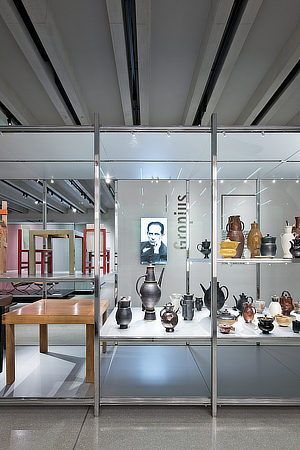 Walter Gropius Walter Gropius
As the one person who safeguarded the physical heritage of the Bauhaus - particularly for Weimar - by establishing the “Historical Collection of 1925”, and who tirelessly worked to preserve and present its artistic and academic achievements, Walter Gropius claimed the role of interpreting the Bauhaus himself. Mediality was an essential aspect in this respect, for during his years in Weimar and especially in Dessau, Gropius actively used photography as a medium to concentrate and propagate the self-image of the school with respect to functionality and modernity.
Mies van der Rohe
The legacy of Mies van der Rohe is presented with luxurious, but also minimalistic pieces of original furniture from the Villa Tugendhat in Brno and Haus Esters in Krefeld. Although these are often attributed to the Bauhaus, none were actually produced there. In contrast to how furniture was designed at the Bauhaus, his excellent furniture and architectural designs were always intended for integration in a larger living context. Mies van der Rohe also used photography, with which he formulated and globally communicated his views on forms of modern living. His building projects - the ones that never left the drawing board and those that were eventually built - have made a lasting impact on our image of contemporary urban architecture.
Hannes Meyer
Following the exclusivity of the Miesian furniture, we introduce the achievements of Hannes Meyer, but not as one might expect, namely based on his famous motto “The needs of the people over the needs of luxury”. The final room in the exhibition highlights his article on “The New World” from 1926, the ideas in which he propagated during his term as Bauhaus director in Dessau. This utopian text addresses the key developments of the 1920s which represents - in response to Gropius’s inaugural “Bauhaus Manifesto” from 1919 - a fitting conclusion to the structure of the exhibition. In this final room, visitors encounter an installation that examines the significance of scholastics, rationalisation, standardisation, internationalisation, community vs. the individual, and the stadium vs. the art museum in our world today. Thus, we are reminded again of the contemporary relevance of the museum as an institution. Consequently, the Bauhaus Museum does not focus on stylistic debates, but shows how the Bauhaus initiated important developments at the beginning of the 20“ century that shaped modern society with respect to a new human image, rationalisation, standardisation, new technologies, new material experience and much more. |
|
 |
 |
 |
 |
 |
 |
 |
CLIENT |
 |
|
|
 |
|
 |
 |
 |
| |
 |
|
 |
 |
 |
 |
AMOUNT |
 |
|
|
 |
|
 |
 |
 |
| |
 |
|
 |
 |
 |
 |
DIMENSIONAL
DATA |
 |
|
|
 |
|
 |
 |
 |
| Floors |
 |
|
 |
|
 |
 |
 |
 |
STRUCTURES |
 |
|
|
 |
|
 |
 |
 |
| |
 |
lngenieurburo Trabert
Ingenieurbüro Dr. Krämer GmbH |
|
 |
 |
 |
 |
STAFF |
 |
|
|
 |
|
 |
 |
 |
Project  |
 |
| Prof. Heike Hanada, laboratory for art and architecture, Berlin |
|
|
 |
|
Associate designers  |
 |
|
|
 |
|
Exhibition design |
 |
| Holzer Kobler Architekturen, Zurich/Berlin |
|
Artistic and multimedia installations |
 |
| Studio TheGreenEyl, Berlin/New York |
|
Mechanical engineer |
 |
| HKL lngenieurgesellschaft mbH |
|
Electrical engineer |
 |
| Raible + Partner GmbH & Co. KG |
|
Physical engineering |
 |
| Prof. Ruhle, Jentzsch & Partner GmbH |
|
Lighting engineer |
 |
|
Geotechnical |
 |
| Geotechnik Dr. Nottrodt Weimar GmbH |
|
Vertical transportation |
 |
|
Safety coordination |
 |
b.i.g. bechtold lngenieurgesellschaft mbH
Dekra Automobil GmbH |
|
 |
 |
 |
 |
CREDITS |
 |
|
|
 |
|
 |
 |
 |
| |
 |
Photos © Andrew Alberts | heike hanada laboratory of art and architecture
Drawings © Klassik Stiftung Weimar
Text edited by Klassik Stiftung Weimar
Courtesy of Klassik Stiftung Weimar | heike hanada laboratory of art and architecture
|
|
 |
  |
 |
|
|